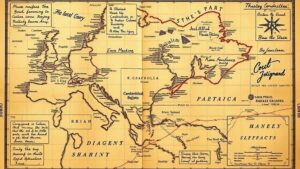Mapping Lost Maritime Beacon Foundations for Coastal Artifact Discoveries
Mapping Lost Maritime Beacon Foundations for Coastal Artifact Discoveries
In the realm of maritime archaeology, the excavation and analysis of historic coastal infrastructure have become critical for understanding past human interactions with marine environments. This article explores the methodology and significance of mapping lost maritime beacon foundations, focusing on their potential to reveal coastal artifacts that date back several centuries. Through comprehensive surveys and advanced geographic information systems (GIS), researchers can reconstruct historical landscapes and uncover significant findings that inform maritime heritage.
Historical Context of Maritime Beacons
Maritime beacons have served as vital navigational aids since ancient times. earliest known beacons date back to the Roman Empire, such as the famous Lighthouse of Alexandria, completed around 280 BC. These structures, often situated on prominent coastal points, guided sailors by marking safe passages and warning of hazardous waters. As coastal settlements expanded and maritime trade flourished, the demand for beacons increased significantly. For example, by the 18th century, beacons had become essential components of maritime safety along the coasts of Europe and North America.
The Importance of Mapping Lost Beacons
Recently, several historic beacons have fallen into disrepair or been lost due to erosion, maritime construction, and urban development. Mapping these lost foundations is crucial as they often serve as untapped repositories of archaeological artifacts. The foundations of beacons can hold evidence of the types of materials used in construction, maritime trade items, and remnants of lighthouse keepers daily lives. Documented discoveries from similar sites include:
- The recovery of ceramics and trade goods from the foundation of a 19th-century beacon in Cape Cod, Massachusetts.
- Artifacts indicating Indigenous maritime practices uncovered around the ruins of a colonial-era lighthouse in British Columbia.
Methodological Approaches to Mapping
The use of modern technology for mapping lost maritime beacons encompasses various methodologies that enhance excavation and artifact recovery. In particular, the following techniques contribute significantly to the process:
- Geographic Information Systems (GIS): GIS technology allows researchers to analyze spatial data and visualize the historical geography of coastal areas. For example, data layers can include historical navigation charts, satellite images, and survey maps correlated with modern-day coastline changes.
- Bathymetric Surveying: This technique involves mapping underwater features using sonar technologies that can detect anomalies indicating the presence of beacon foundations. A notable study in 2020 used bathymetric surveying off the coast of Virginia, revealing the submerged remains of a previously unknown 19th-century beacon.
- Remote Sensing: Emerging technologies such as LiDAR (Light Detection and Ranging) have transformed the ability to identify potential archaeological sites concealed by vegetation or sediment.
Case Studies of Successful Discoveries
Several case studies illustrate the success of mapping maritime beacon foundations in uncovering artifacts:
- The Isle of Arran, Scotland (2021): A comprehensive GIS analysis coupled with underwater surveys led to the discovery of a lost beacons foundations and associated shipwreck artifacts, shedding light on historic maritime routes.
- Point Reyes National Seashore, California (2019): Archaeologists utilized remote sensing techniques to locate the foundation of a long-lost 19th-century lighthouse, leading to the recovery of personal effects and documentation related to lighthouse operations.
Challenges and Considerations
Despite the promise of mapping lost beacon foundations, researchers face several challenges. High costs associated with advanced technology can limit accessibility, while coastal erosion complicates the preservation of these sites. Plus, there can be legal and ethical considerations concerning underwater archaeology and the preservation of cultural heritage. Researchers must navigate policies set forth by organizations such as UNESCO and local heritage authorities concerning excavation and preservation.
Conclusion and Future Directions
Mapping lost maritime beacon foundations provides invaluable insights into coastal artifact discoveries, enriching our understanding of maritime history and enhancing cultural heritage preservation. As technologies continue to advance and interdisciplinary collaborations expand, future research can uncover more artifacts and inform best practices in the field. Moving forward, a concerted effort is required to secure funding and resources to ensure these initiatives can adequately preserve the maritime legacy.
To wrap up, the mapping of lost maritime beacon foundations not only benefits maritime archaeology but can also foster public engagement and education regarding the importance of our coastal histories. Effective community partnerships and educational outreach can play a significant role in promoting maritime heritage conservation efforts.



